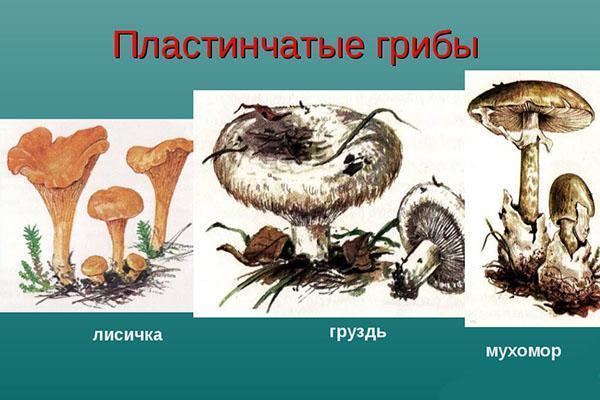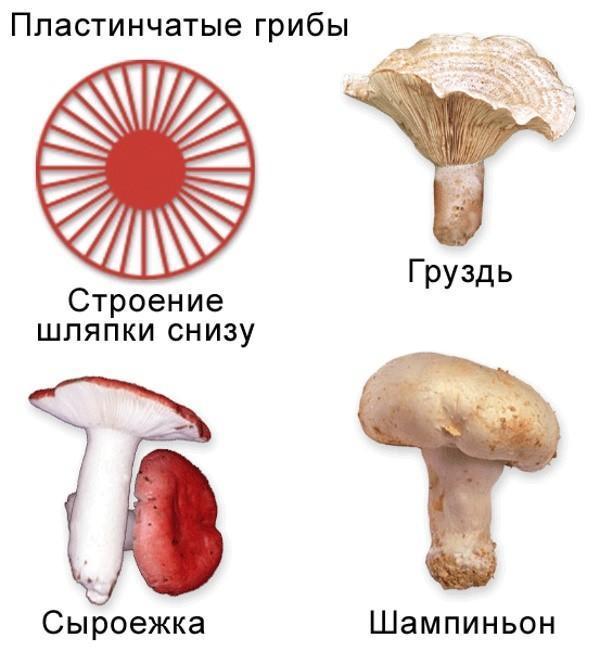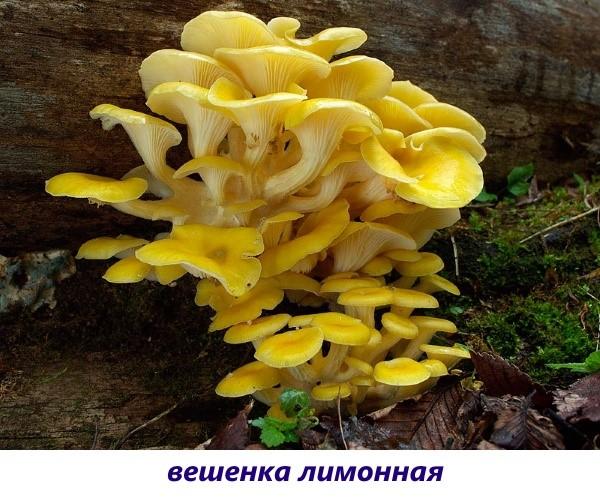We get acquainted with lamellar mushrooms: what is their peculiarity, and what are
 Most mushroom pickers consider spongy mushrooms to be the most valuable gifts of the forest due to their fleshy and dense pulp, but one should not neglect another, no less numerous, group - lamellar mushrooms. Although the structure of their mushroom body does not have such characteristics and most often they are thin and fragile, there are very tasty mushrooms among these specimens, especially in pickled form. True, there are many among the lamellar mushrooms and inedible, and even poisonous varieties that pose a great danger, take at least the pale toadstool. What is the difference between lamellar mushrooms and tubular mushrooms, and what they are, we will talk about this today.
Most mushroom pickers consider spongy mushrooms to be the most valuable gifts of the forest due to their fleshy and dense pulp, but one should not neglect another, no less numerous, group - lamellar mushrooms. Although the structure of their mushroom body does not have such characteristics and most often they are thin and fragile, there are very tasty mushrooms among these specimens, especially in pickled form. True, there are many among the lamellar mushrooms and inedible, and even poisonous varieties that pose a great danger, take at least the pale toadstool. What is the difference between lamellar mushrooms and tubular mushrooms, and what they are, we will talk about this today.
Specific features of the species category

There are also such mushrooms in which there are bridges between the plates, connecting them to each other, due to which a fine mesh is obtained.
In addition, most lamellar mushrooms have a hollow stem. It can be either absolutely flat or decorated with a ring made from the remains of the bedspread, which covers the cap of young specimens. As it grows, the veil breaks and part of it, which remains on the leg, forms a ring.
Almost all lamellar mushrooms secrete milky juice, and those that do not have it are popularly called "breadcrumbs".
Lamellar delicious mushrooms
Despite the fragile flesh, which often breaks during cooking, the lamellar mushrooms are very good, especially when fried or pickled. But for soup, unfortunately, they are rarely used for the same reason, except that honey mushrooms and some more types - they are more elastic and keep their shape better than others.
Among the edible lamellar mushrooms, noteworthy are:
- Lemon oyster mushroom. One of those mushrooms with which you can do everything, up to boiling, it is a pity that it grows only in the Far East. The hats are small, maximum 10 cm, of a beautiful lemon color, the plates smoothly transition to a rather long leg, like for oyster mushrooms (about 9 cm), which at first grows in the center, but shifts with age. The pulp is white and tender, smells like flour, but in old mushrooms it becomes rough.

- Mokruha is pink. Despite the nasty mucus that completely covers the light brown cap with rare dark spots, the mushroom is delicious when fried and salted. The only thing to consider is that the thick plates under the cap should still remain white, because in old mushrooms they turn black and the mushroom loses its presentation, especially when boiled.

- The webcap is purple.One of those mushrooms that is difficult to confuse is that its purple color immediately attracts attention, but should not scare off, since the mushroom is quite edible. The slightly convex cap has darker plates at the bottom and stands on a high stem. The pulp is the same color, smells like leather.

- The russula is blue. It is characterized by a fatter hat with thick white plates, while the hat itself is painted in a beautiful blue-lilac color with a darker center. The white leg is slightly thicker in the center. The pulp is light, pleasant to the taste.

- Champignon forest. One of the most delicious mushrooms with an unusually aromatic and sweet light pulp, which turns slightly brown when broken. It differs from its "pale-faced brothers" by a brown cap covered with scales.

Most edible lamellar mushrooms are more tasty at a young age, and in older specimens the lamellae often darken, and the flesh either becomes completely "crystal" and falls apart when trying to cut the mushroom, or it acquires stiffness and an unpleasant taste.
Beautiful, but inedible "plates"
Beautiful-looking mushrooms do not always meet expectations, and sometimes they can unpleasantly surprise you with their taste. There are such "fakes" among inedible lamellar mushrooms:
- Milk olive black. The large cap of a young mushroom has the shape of a cone and is colored brown-green, then it straightens out and becomes dark. Thick yellowish plates also darken with age. Squat thick brown leg, in pits. The pulp is bitter.

- Miller is neutral (aka oak or poddubnik). It grows, respectively, under oak trees, the cap is concave, red-brown, with a darker center and lighter rings. The leg is the same color. The pulp gives off an oily aroma and is bitter.

- Wolf saw-leaf. Outwardly, it is very similar to oyster mushroom; yellow-brown hats in the form of growths are often found on trees. You can distinguish the saw-leaf from the edible oyster mushroom by the plates: they are wide and have a jagged edge. The cap itself is covered with a felt skin with small warts. The pulp is very tough and bitter.

- Violinist. The mushroom is similar to a pepper mushroom: the cap with a funnel in the middle is covered with a velvet creamy skin, the edges are tucked up. The short stem is white, and the plates are sparse, while the leg of the breast is longer, and the plates under the hat are thick. The pulp is thin and pungent.

The inedibility of the mushroom often gives out its smell, so it will not be superfluous to "sniff" the found treasure well.
Dangerous mushrooms with plates under the hat
As already mentioned, there are many poisonous lamellar mushrooms, which in no case should be collected and consumed. The use of such mushrooms will lead to sad consequences:
- Poisonous entoloma (aka rose-plated). A very beautiful mushroom with a thick, dense leg in the form of a club and a large pale yellow cap with a diameter of up to 20 cm. Wide plates are light at first, then redden. The pulp is unpleasant, with a bitter smell.

- Mayr's russula. A small cap (no more than 7 cm) is pinkish, the plates are thick, white with a slight green-gray tint. The leg is white, dense, turns yellow over time. The pulp smells like coconut, in old mushrooms it just has a sweet aroma, but with a pungent taste.

- Fly agaric porphyry. The brown-gray cap is convex at first, then becomes concave, covered with scales. The leg is long, ringed at the top. Light flesh smells unpleasant.

- Earthen fiber. A white hat with a lilac shade is flat, swollen in the center. The leg is thin, fibrous. The plates are light, then darken.

Symptoms of poisoning may not appear immediately, or even completely absent at first, but dangerous toxins will actually destroy your liver from the inside, so do not risk it and it is better to leave such mushrooms in the forest.
Lamellar mushrooms are one of the most numerous groups, including both valuable specimens for the kitchen and the most dangerous.Be careful going in search so as not to confuse them and pass by unfamiliar mushrooms. Health is more valuable than experiments!